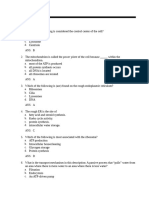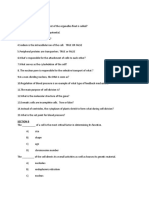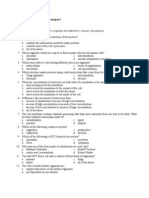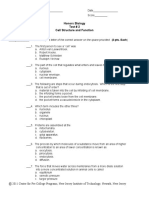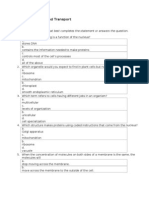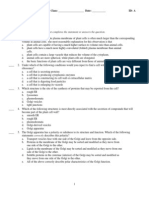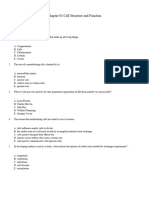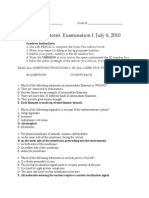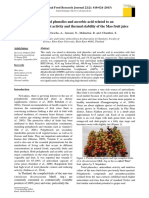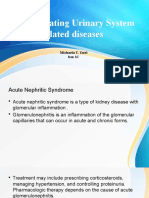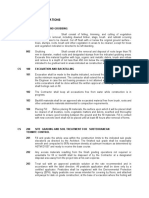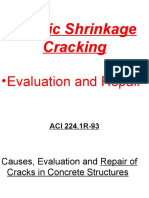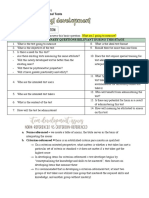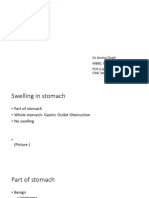0% found this document useful (0 votes)
11 views14 pagesAP1 Unit 2 Cell Structure Function Division
The document provides an overview of cell structure, function, and the processes necessary for cellular survival, including transport methods and cellular respiration. It covers key cellular components, their functions, and the importance of energy production through ATP. Additionally, it includes multiple-choice questions, true/false statements, and matching exercises to reinforce understanding of the material.
Uploaded by
rjrageen88Copyright
© © All Rights Reserved
We take content rights seriously. If you suspect this is your content, claim it here.
Available Formats
Download as PDF, TXT or read online on Scribd
0% found this document useful (0 votes)
11 views14 pagesAP1 Unit 2 Cell Structure Function Division
The document provides an overview of cell structure, function, and the processes necessary for cellular survival, including transport methods and cellular respiration. It covers key cellular components, their functions, and the importance of energy production through ATP. Additionally, it includes multiple-choice questions, true/false statements, and matching exercises to reinforce understanding of the material.
Uploaded by
rjrageen88Copyright
© © All Rights Reserved
We take content rights seriously. If you suspect this is your content, claim it here.
Available Formats
Download as PDF, TXT or read online on Scribd
/ 14












